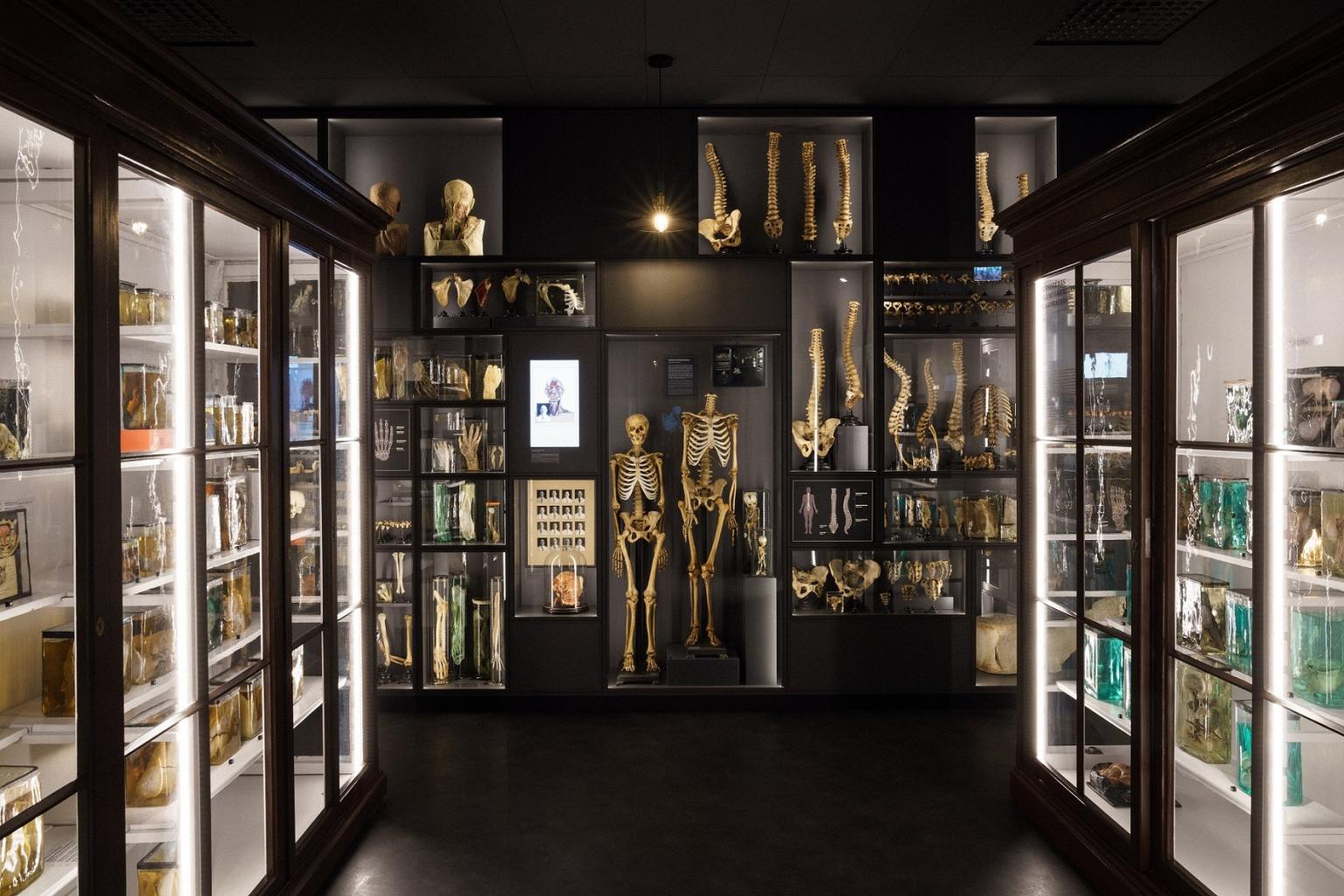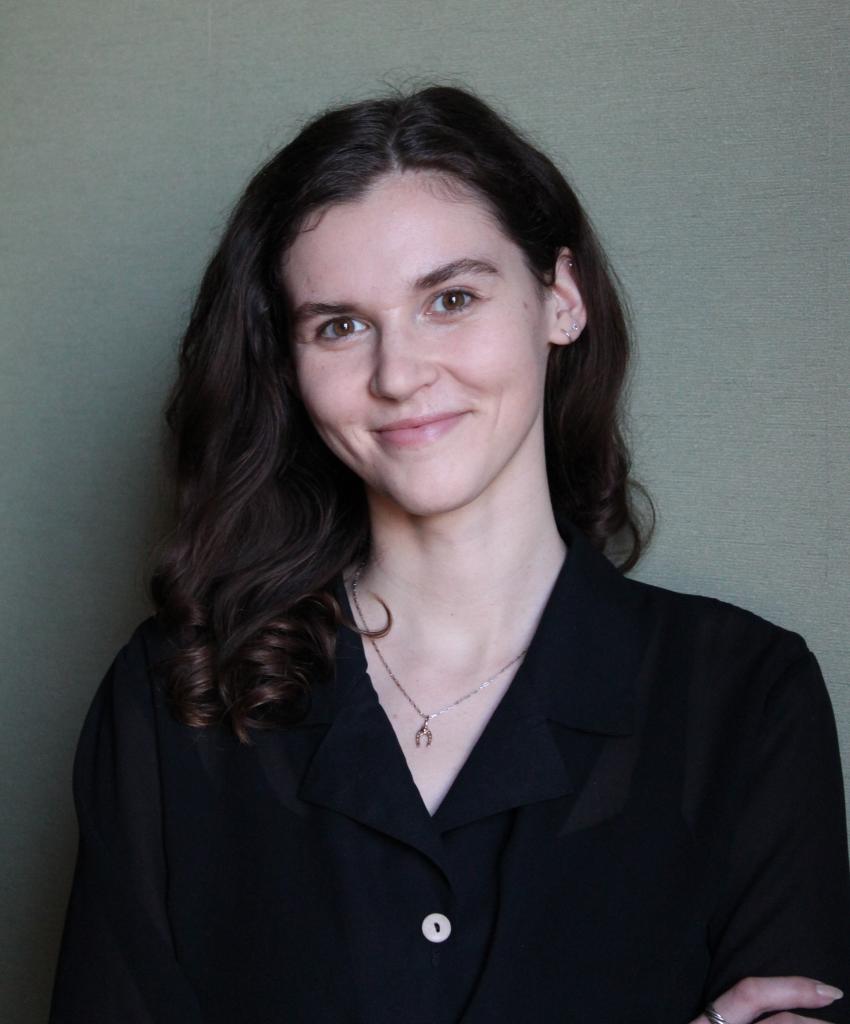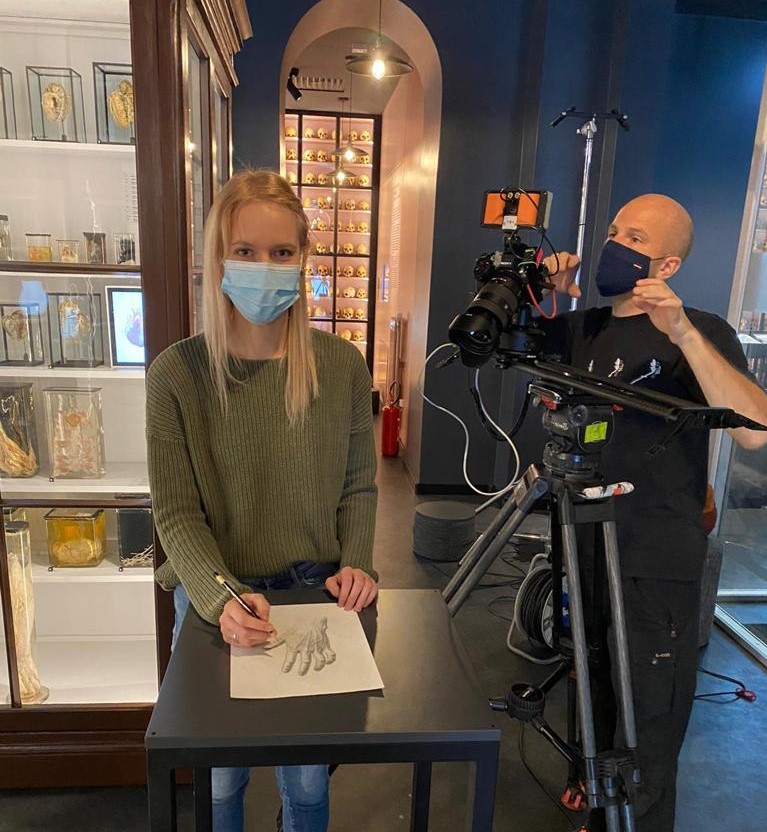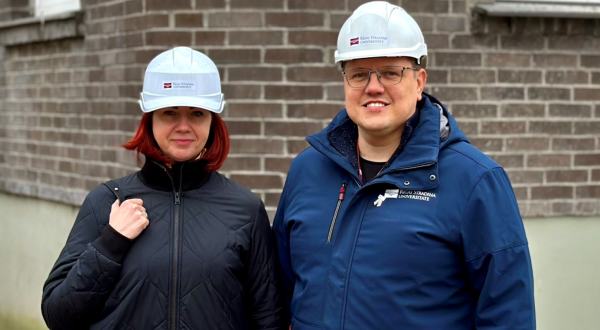RSU Anatomy Museum’s New Team: We Are Open Online Even Though Our Doors are Still Closed
The Anatomy Museum is one of the Rīga Stradiņš University’s (RSU) most ambitious projects in recent years – a historic building has been reconstructed, a unique museum collection has been preserved and restored, and a new modern, interactive and engaging exhibition has been created. The plans for the museum's opening in autumn 2020 had to be canceled due to the COVID-19 pandemic, but the museum has used this time to continue to work, develop and to prepare to welcome visitors in person.
 RSU Anatomy Museum Photo: "Dd Studio"
RSU Anatomy Museum Photo: "Dd Studio"
We are filming videos about the museum's values, developing new educational programmes and creating online activities, which have already been tested by RSU employees and Latvian high school students. This would not have been possible without our capable team and the three new and enthusiastic employees who joined us six month ago – Education Project Manager Kaspars Zaltāns, Information Centre Specialists and Museum Educators Rūta Žiaugre and Linda Līva Oše.
Speaking about her new colleagues, Ieva Lībiete, the Head of the Anatomy Museum, has this to say:
‘Our mutual task will be to ensure that people want to come back to the museum again and again.
Many of us have experienced an otherwise wonderful visit to a museum being ruined by a rude member of staff behind the ticketing counter, or in the coat check. That's why it was particularly important to me to focus on staffing the museum's information centre. Out of more than 100 applications, we managed to build an interdisciplinary, creative, intelligent and experienced team. They are all very pleasant to work with!’
Please tell us about yourself – what's your background and what do you do in the museum?
Rūta: I have not yet started my specific work duties, which are to communicate with the museum’s visitors and to lead tours. We have replaced this with online classes. I have only worked here for four months, but I have previously worked in other museums as a guide. The Anatomy Museum seemed to be something special – it is exciting to be here while the museum itself is still being built. It’s a historic moment. I have no in-depth knowledge of medicine or biology, but I see this as opportunity to learn more about these fields. I studied French-Latvian intercultural relations at the Latvian Academy of Culture, and I hope that I will get a chance to use my French here.
 Rūta Žiaugre
Rūta Žiaugre
Linda: At first, I was a little intimidated by the specific nature of the museum, but I have grown to love it! The museum is very interesting, modern and open to innovative ideas. I graduated a year ago, and I feel that I can still continue to learn here at the museum. I studied at the Art Academy of Latvia and have a bachelor's degree in restoration, as well as a master's degree in pedagogy.
Kaspars: I am a historian and previously worked as a Research Associate at the 1991 Barricades Museum. I also have over ten years of experience as a tour guide in Riga. Because of the Anatomy Museum's extensive collection of bones, my job here is an opportunity for me to return to something I was interested in while I was a student - archaeology. My work entails creating educational programmes, working on the museum’s recognisability and creating content for our social media.
How do you feel about the fact that the museum is ready but that visitors are not yet allowed to come?
Kaspars: It’s undeniably an odd situation – the museum is finished, we are ready to open our doors, Linda and Rūta have learned everything they can about the museum’s collection, but we can’t yet meet our visitors in person. The only link that we have with them is through the online classes that we hold for schools or through social media.
The lockdown was an opportunity for us to study the material and the collection in depth. Under normal circumstances, we might not have been able to devote as much time to this. Our main job right now is to plan, learn and to dream about the future.
Rūta: The pandemic has made us all very creative. We’ve been forced to come up with new ideas that can work online and on social media.
Linda: I have really appreciated the opportunity to get to know the museum and its collection in depth, but I am really looking forward being able to hold classes and lead tours.
The museum’s first initiative is an intriguing skull drawing class for RSU employees and high-school students. Is there more to come?
Rūta: We initially tested the drawing lesson out on the high schools that RSU has cooperation agreements with. Now pupils from other schools are signing up as well and other people who have heard of the class. I think we have created something very interesting that appeals to both adults and teenagers.
We have plans for other classes, but I don’t want to ruin the surprise!
 Still from the video "Skelets Lukstiņš" about respect, with Kaspars Zaltāns
Still from the video "Skelets Lukstiņš" about respect, with Kaspars Zaltāns
Kaspars: Something else that we are doing is filming videos about the museum's core values. The idea is to create a series. The first four videos have already been filmed and are gradually being released. The two videos that are already available explain why respect and being inquisitive are important to the museum.
We are currently actively writing the scripts for next season's videos. These will be about how preparations are made and cover the technologies that are used, their history and feature interesting examples from the museum’s collection.
This is the only way in which we can open the museum while the doors are physically still closed. The videos are a good way to attract attention, especially outside Riga and abroad.
Where do you get your ideas for new educational programmes and projects?
Kaspars: I have researched many other medical museums to understand what programmes work, how we could improve on them and apply the ideas to our collection. We do not copy, but rather draw inspiration. It’s easy for us to step into a potential visitors’ shoes – if we find something interesting ourselves, then so will our visitors.
What are the Anatomy Museum’s long term plans?
Kaspars: To sum it up in one sentence – we have to continue to be creative and active! I know that a lot of people will come as soon as the museum opens, because the museum is new and our content is engaging. We will most certainly be very busy, but we mustn't forget about our ongoing projects – the videos and our educational programmes.
What are some examples of a good museum?
Rūta: I had a wonderful experience exploring the Musée d'Orsay while I studied in Paris as an exchange student. They had an exhibition about Baltic symbolism back then. I had to visit the museum at least five times to see the entire exhibition. I also want to mention the Kumu Art Museum in Tallinn as a good example of what a modern museum should look like.
Linda: I divide museums into art museums and the rest. I do not rate art museums by how modern they are, because the way paintings are displayed in almost all art museums is quite traditional. From the “other museums” category I want to mention the Museum of the Second World War in Gdansk, Poland, which has a very modern exhibition.
Kaspars: A museum can be judged by its concept, the building, and its collection. One of the museums that left a really good impression is a very small, regional museum in Indra, near Daugavpils – The Museum of Happiness. It is a conceptual museum on the theme of happiness, where you can get acquainted with different ideas about what happiness can mean at different stations throughout the exhibition. For example, there is a “flavour corner” where you can reconstruct different tastes from your childhood by making pancakes or other foods. The entrance ticket is a chocolate bar, which boosts the so-called happiness hormone. In contrast to other regional museums, where the collections consist of irons, rakes and a portrait of the local baron, I really appreciated their original approach and vision.
The second museum I want to mention has a very original architecture – the Bundeswehr Military History Museum in Dresden. It is a huge building with a glass structure jutting out of one side where a bomb was dropped during World War II. Here, the historic building’s façade has not been renovated to look like it did before. Rather, the damage has been preserved through a somewhat aggressive architectural structure which shows how war tears through the urban environment. The building itself becomes a part of the collection within.
What are the most important features of a good, modern museum in your opinion?
Kaspars: A museum needs to start a dialogue. It can't offer just one official story. Certain facts are indisputable, of course, but the Anatomy Museum’s collection creates a discussion.
Rūta: Innovation. Although the Anatomy Museum’s collection was created 100 years ago, we can showcase it in a modern and creative manner.
Linda: Visitors’ interest. You can develop a discussion once you get a person interested in a topic.
Kaspars: Accessibility. Modern museums are becoming increasingly accessible. By this I don’t just mean physical accessibility, but also how accessible a museum’s contents are. Visitors have to be able to navigate and understand the information that they’re presented with, and also to be able to communicate with staff and get help with finding out what they want to know.
Rūta: Atmosphere. Atmosphere is primarily created by a museum’s staff. I think we have an excellent team. We all come from different backgrounds, which means that we can each contribute with our different point of view.
 Linda Līva Oše
Linda Līva Oše
Kaspars: It is important for a museum not to become too narrow and specialised. We joined the museum with minimal prior knowledge of anatomy, which makes it easier for us to get a sense what a visitor would be able to understand, or what needs further clarification.
Related news
 RSU is growing and developing: major reconstruction underway in the main buildingDevelopment, For RSU Employees, For Students
RSU is growing and developing: major reconstruction underway in the main buildingDevelopment, For RSU Employees, For Students


